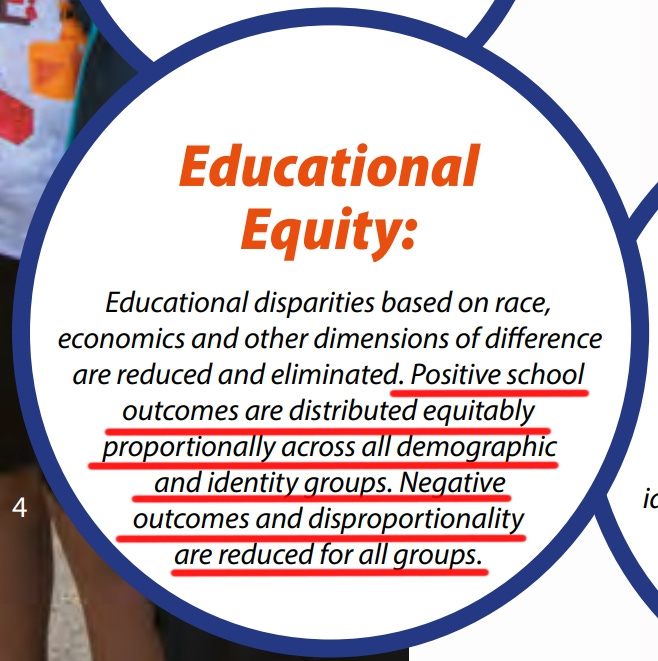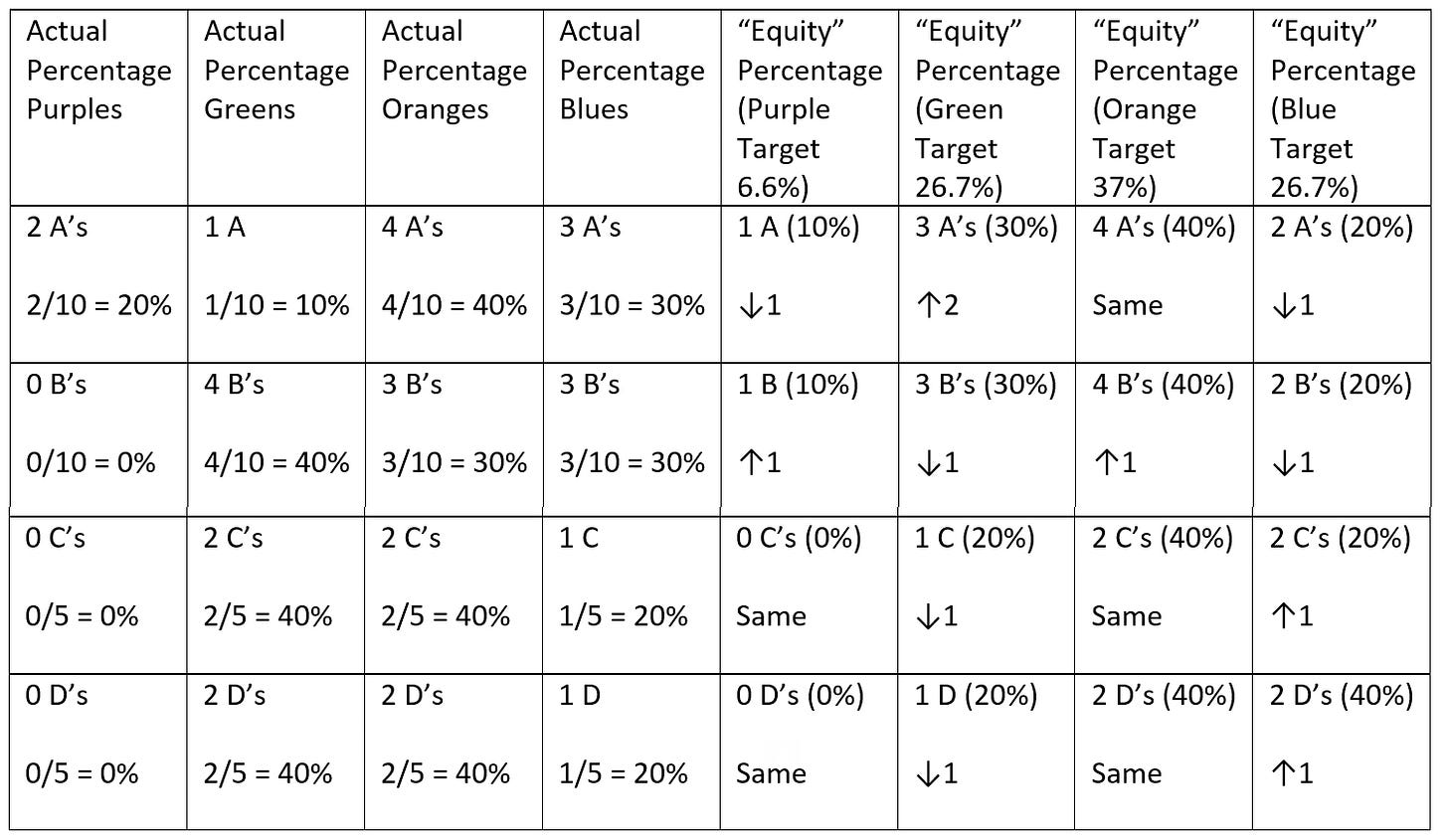What Would Applying “Equity” Definitions Really Mean?
Word games that fail ethics.
I noticed that at a recent meeting of our local school board an “Equity Audit” report was presented. “Equity” is a word used repeatedly by many people claiming to promote some form of justice. However, whatever definition of the term that is being relied upon is often left unsaid.
I read the “equity” audit. It repeatedly states this or that school policy needed to focus more on achieving outcomes based on “equity.” A typical recommendation reads: “Equity Recommendations -- The policy should state an explicit equity rationale and equity goals for how placement and transfer decisions will be made in the division” and “The policy should articulate an equity vision that includes language that illustrates that that [sic] changes in class size may be used to close equity gaps for students.”
But nowhere in the document is the term “equity” defined. So I asked a school board member what the official definition of “equity” was, and she referred me to the 2025 Equity for All Strategic Plan. That plan defines “educational equity” as follows: “Positive school outcomes are distributed equitably proportionally across all demographic and identity groups. Negative outcomes and disproportionality are reduced for all groups.”
In evaluating that definition, we need to take the term “equitably” out of the definition, as using the concept being defined as part of the definition itself is circular. That done, the claim is that, under “educational equity,” “Positive school outcomes are distributed proportionally across all demographic and identity groups. Negative outcomes and disproportionality are reduced for all groups.”
What would applications of this definition actually look like if the definition were taken seriously? Since the “Equity Audit” didn’t clarify what “equity” means within any of the policies it “audited,” I thought I’d conduct a sort of audit myself to see exactly what imposing “equity” would mean in the education context. It’s a simple exercise, but it’s important, because examples like this are the only way to really understand the consequences of actually following this definition of “educational equity,” in any context.
First, I take it that a good grade for a student is an example of a “positive school outcome.” So I set off to see exactly how a policy that followed the definition of “equity” in the Strategic Plan would apply. (Again, the example doesn’t have to represent grades. It could represent slots in an academic program, the distribution of academic honors, or even disciplinary action for bad behavior, and anything else that necessarily requires the application of metrics of any sort to measure academic or other performance.)
So back to our example. Say the demographic breakdown of a class of 30 students is as follows:
2 Purple – 6.6% of class
9 Green – 30% of class
11 Orange – 36.7% of class
8 Blue – 26.7% of class
And say these are the grades earned on a test in that class by each member of the same racial groups:
So there are a total of ten A’s, ten B’s, 5 C’s, and 5 D’s.
Now, if “positive school outcomes” are “distributed proportionally across all demographic groups,” then each grade (A, B, C, or D) should be distributed proportionally across all demographic groups. Below is a chart that shows (in the first four columns) the actual percentage of each grade earned by members of each demographic group. The chart then shows in the last four columns how those grades would have to be redistributed (that is, exchanged between them or swapped) to move closer to the “equity target” of grade distribution, which is a distribution of grades based on demographic representation. Up and down arrows show how many of a certain grade would have to be taken away from, or given to, a member of a certain demographic group to get the grade distributions closer to the equity target.
As you can see, any policy that actually applied the definition of “educational equity” used in the Strategic Plan would be grossly unfair, as it would require taking away grades earned by some kids and giving them to others based solely on race. You might say such a stark application of an “equity” policy would never be used, and that may be true, but this example shows that, however one applies the definition of “equity,” it’s impossible to increase positive outcomes based on race without increasing negative outcomes based on race, as long as educational achievement is measured along any comparative metric whatsoever. That includes not only grades, but also admissions into certain academic programs, the distribution of academic honors, and so on.
The only way to potentially increase positive outcomes without also increasing negative outcomes is to let everyone into every academic program and give everyone an A once they’re in. But doing that wouldn’t even end up increasing positive outcomes once you realize that, under such a policy, there would be no incentive to bother studying, and kids would learn less.
So either equity does positive harm to some people (by reducing their positive school outcomes based on race in order to increase positive school outcomes for others based on race), or positive harm to all people (by eliminating grades, slots in academic programs, or honors distribution, thereby largely eliminating incentives to learn). So for all practical purposes, making positive outcomes more proportional by race is impossible without increasing negative outcomes for some groups based on race.
Realizing this, it seems the only fair thing to do is to either abandon the relentlessly illogical concept of “equity” used in the Strategic Plan, or simply ignore it (as the “Equity Audit” seems to do, by simply repeating the phrase without ever spelling out what the implications of its application would really mean or having any real expectation the definition will be followed).
So it turns out the “Strategic Plan” based on its definition of “equity” is either an abandonment of ethical principle or a circular firing squad.
Does your school board or school administration claim to operate under the same definition of “educational equity”? If so, perhaps kids in those school systems should work through a similar math exercise to see how such a definition of “educational equity” would really work.



